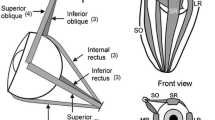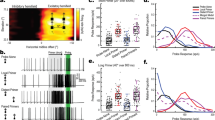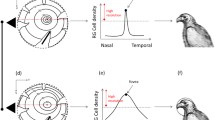Abstract.
The movements of both eyes and the head were recorded with search coils in unrestrained, freely moving chameleons. As a main result I found that the generation of saccades in the left and the right eye was either independent from each other or was highly correlated according to the behavioural situation. When no prey item was fixated, disconjugate saccades were observed which was in accordance with earlier observations in chameleons. During prey tracking the chameleons switched to a different oculomotor behaviour and pursued the moving prey with synchronous saccades. At higher target velocities, the tracking movement of the head was also saccadic and was synchronised with the two eyes. Binocular coupling affected only the timing of the saccades but not the metrics: the amplitudes of the synchronous saccades were usually different in the two eyes. These observations suggest the existence of two independent premotor neuronal circuits for left and right eye saccadic motor control in the chameleon. Binocular coupling in prey-tracking chameleons is probably achieved by neuronal coupling of these premotor circuits during eye–head coordination. The ability to switch between synchronous and uncoupled saccadic eye movements has not been described for any other vertebrate. This unique ability of the chameleon may help to understand the organisation of the oculomotor system of other vertebrates since evidence for separate left eye and right eye saccade generation and position control has recently also been reported in primates.
Similar content being viewed by others
Author information
Authors and Affiliations
Additional information
Electronic Publication
Rights and permissions
About this article
Cite this article
Ott, M. Chameleons have independent eye movements but synchronise both eyes during saccadic prey tracking. Exp Brain Res 139, 173–179 (2001). https://doi.org/10.1007/s002210100774
Received:
Accepted:
Issue Date:
DOI: https://doi.org/10.1007/s002210100774




